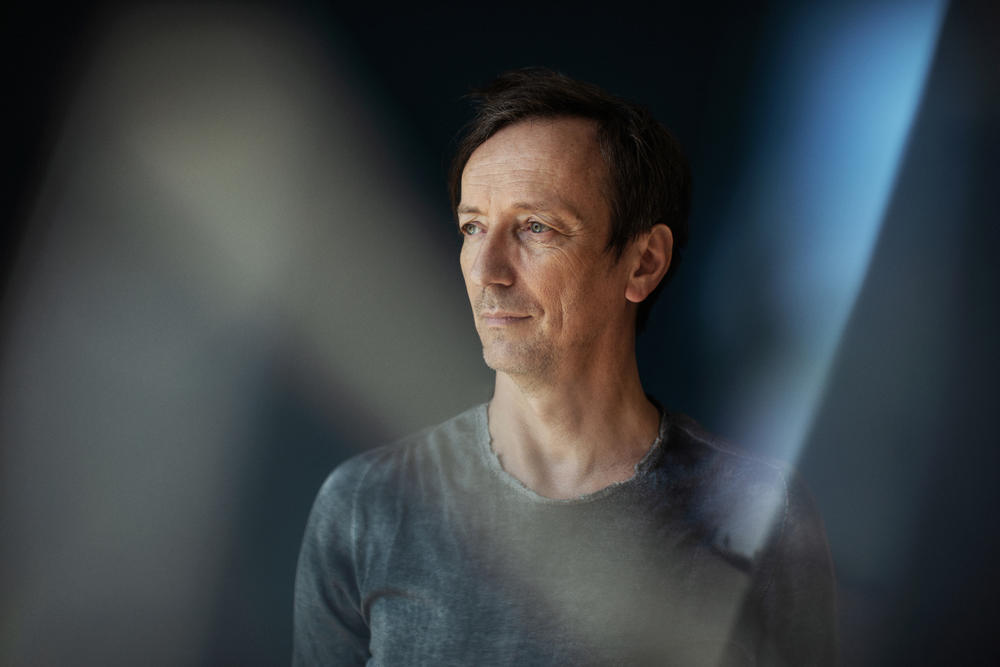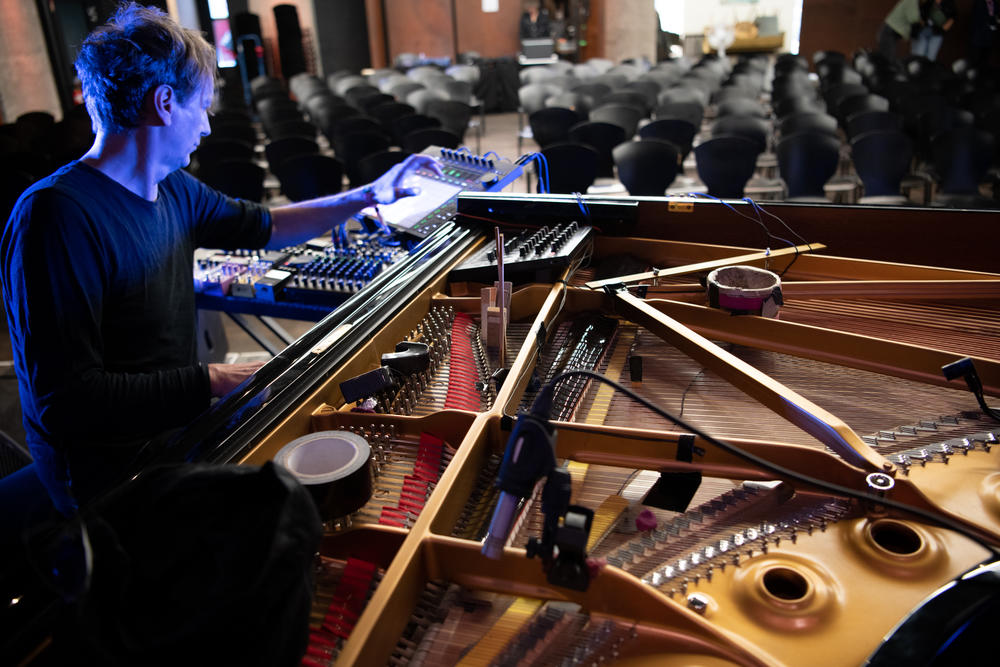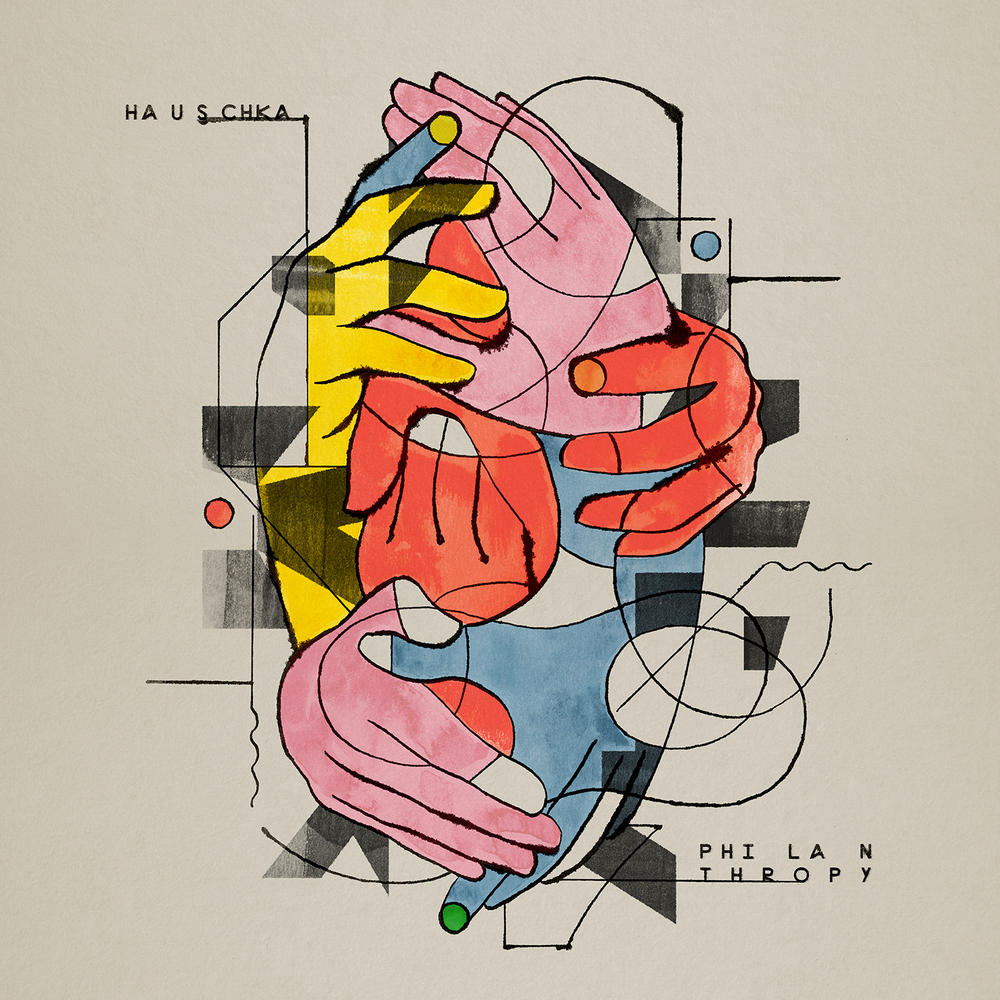Section Branding
Header Content
Hauschka's prepared piano is a layered canvas of sounds in new album
Primary Content
Volker Bertelmann is an early bird. During that blue hour, when all is still and quiet, the German composer-pianist – whose stage name is Hauschka – writes simple melodies. But the real magic happens when he rummages through his "basket of trash" for things like marbles, duct tape and pins. These will all end up inside his "prepared" piano. It's a technique pioneered by American composer John Cage in the late 1930s. Volker says he likes the idea because he can be independent, controlling every sound without needing the help of band members.
"Like when you think about a beat, you need a drummer, and a bassline needs a bass player. So you always have to call them up," Hauschka tells NPR's Leila Fadel. "But I wanted to find a possibility to do it by myself. So, in a way, I use the piano as a drum."
The recent Oscar-winner (All Quiet on the Western Front) returns to his signature keyboard approach, plus electronics, for his latest album, Philanthropy, out Friday. "I'm using these analog guitar pedals that I'm feeding while I'm playing, and I have a little mixing board next to the piano," he explains to NPR. "The piano is the sound source, but I can create electronic music with an analog instrument."
The piano is both a string and a percussion instrument, since felt-covered hammers hit strings to produce sound. Hauschka focuses especially on the point where the hammer hits the string to create endless options. The resulting happy accidents are apparent right from the start of the first track, "Diversity." A running, twinkling arpeggiated line is punctuated by muted strings (thanks to a heavy roll of tape) and what he calls a "carpet of sounds" produced by a small children's davul drum found at a Turkish market in Istanbul. As the music begins to rise toward the end, many small elements rattle at the same time. "It makes me happy to see that I'm working on something that I haven't seen before, and that is an accident. But at the same time, this accident is something that gives the music this quirky aspect of, 'Oh, what's this?'" Hauschka says.
He describes his work on the album like that of a visual artist. "You can see me in front of a canvas and I'm painting, let's say, with 10 colors. Then I take a spoon and I scratch the color back off the canvas. So in some areas, I reach the very first color and in other areas I have a mixture of all ten," he explains. "I'm not working first on the composition and then recording it. I'm recording first, and then I'm working on the composition."
"Loved Ones," one of the album's singles, is more introspective, with string accompaniment by cellist Laura Wiek. The melody is sparse and melancholic. "Melancholy is not a negative thing," Hauschka insists. "It's actually involving both sadness and happiness at the same time. Both have to coexist next to each other, and then I feel alive somehow." He came up with the tune while thinking about the caring people around him. "They are not many, but the ones you can count on, they should be very strong," he adds.
Philanthropy is the composer's 14th studio release, with a title that surfaced out of the stress of the pandemic and climate change. "What is actually left is humanity and living with each other, Hauschka says. "No matter where we are going, what we have is our connections with our families, with people that we know. But also with others that we might not know. I felt 'Philanthropy' is a great title to strengthen the interaction with each other."
The radio version of this story was produced by Barry Gordemer. The digital version was edited by Tom Huizenga.
Copyright 2023 NPR. To see more, visit https://www.npr.org.



